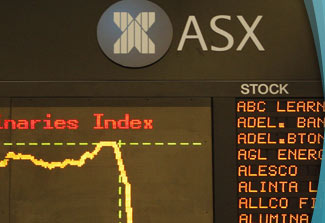Aussie shares can be tax-friendly
SINKING all your super into Australian shares offering fully franked dividends sounds like a seriously risky strategy, but might offer tax benefits.

Aussie shares can be tax-friendly
SINKING all your superannuation savings into investments in Australian shares offering fully franked dividends sounds like a seriously risky strategy.
After all, retirement is a time of your life when your only income is likely to be from your investments.
But if you can live with the short-term volatility that comes with investing in the sharemarket, employing such a strategy means you will enjoy a negative tax rate and in general should deliver greater returns over time than a more conservative approach.
This is because investment earnings -- income and capital growth -- in a pension fund are tax-free. And the real bonus is that pension funds enjoy the same treatment of excess franking rebates as individuals so they are rebated to the fund in cash.
"It's a strategy that I would definitely consider for myself," says Doug Webber, associate director at Macquarie Wealth Management.
In order to show the advantages of such a strategy Webber looks at John, 66 who has accumulated a $2 million portfolio in super, including property assets he sold and tipped into super in the leadup to June 30 (the one-off special for after-tax contributions of up to $1 million).
John is weighing up whether he should invest entirely in Australian stocks or whether he should split the money evenly between shares and fixed interest.
Under this study, Mr Webber assumes that John retains $200,000 in a cash management account in his wrap pension account to allow a buffer for the minimum pension income payments he has to draw down each year.
"That's arguably more than required but it's a conservative approach," Mr Webber says.
At age 66, John would need to draw down a minimum 4 per cent of his income stream balance each year -- as per government rules -- rising to 14 per cent by the time he is 95. The $200,000 in his cash management account is earning a 4 per cent annual interest rate.
With the balance of $1.8 million, John would either put the entire amount into shares or $900.000 in shares and the other $900,000 in a range of term deposits.
In this study, the shares will enjoy capital growth of 5 per cent a year and the term deposits will return an average 7 per cent a year.
For the purposes of this exercise, Mr Webber assumes the use of Macquarie's internal model income portfolio for his sharemarket exposure.
As a result of this strategy, John would receive $84,204 in dividends, $27,969 in franking credits, and $8000 in income from the cash management account.
Capital growth would amount to $900,000 for a total annual return of $210,173.
In the other scenario of $200,000 in cash, $900,000 in shares and $900,000 in fixed interest, the annual income produced would be $42,102 in dividends, $13,984 in franking credits, $63,000 in fixed interest income and $8000 cash income. Capital growth on the shares would be $45,000. This comes to a total annual return of $172,086.
Clearly, the first strategy's returns are much higher, yielding 22 per cent more income and in turn extending the life of John's income stream.
Mr Webber is a firm supporter in having your income stream investing directly in shares rather than through a managed fund, in order to maximise the franking credits.
"If you are in a managed fund, there's often a watering down effect on the franking credit side because you can't control how the fund manager invests -- few funds would pay 100 per cent of franking credits through to you," Mr Webber says.
Whiile Sunsuper's Steven Travis concurs with this, he says that the more sophisticated platforms allow the straight flow through of imputation credits and the watering down would not be as great.
But either way, if you were to pursue this strategy you would need to be content to live with short-term volatility in your portfolio.
Given the capital gains shown in this example are over time, there will potentially be large differences in what's achieved year by year.
While financial advisers warn against the dangers of being too conservative in your choice of retirement investments -- after all, your time horizon is still 20 or 30 years -- this strategy may be a trifle risky for most.
However, it is worth noting that while the value of your shares may go down, more than 50 per cent of the money earned in this strategy comes from the dividends and franking credits, which may not necessarily change should the sharemarket fall.
Peter Thornhill of Motivated Money says dividends remain stable in aggregate.
Then there is also the legislative risk. For example, will the attractive tax treatment of pension income remain the same 10 or 15 years down the track?
Historically, changes to superannuation have been grandfathered so that those already in a strategy do not lose out.
As a result while the legislative risk cannot be ignored, it is likely that if you are already locked into a product, you will not be disadvantaged. But of course there's no guarantee.



